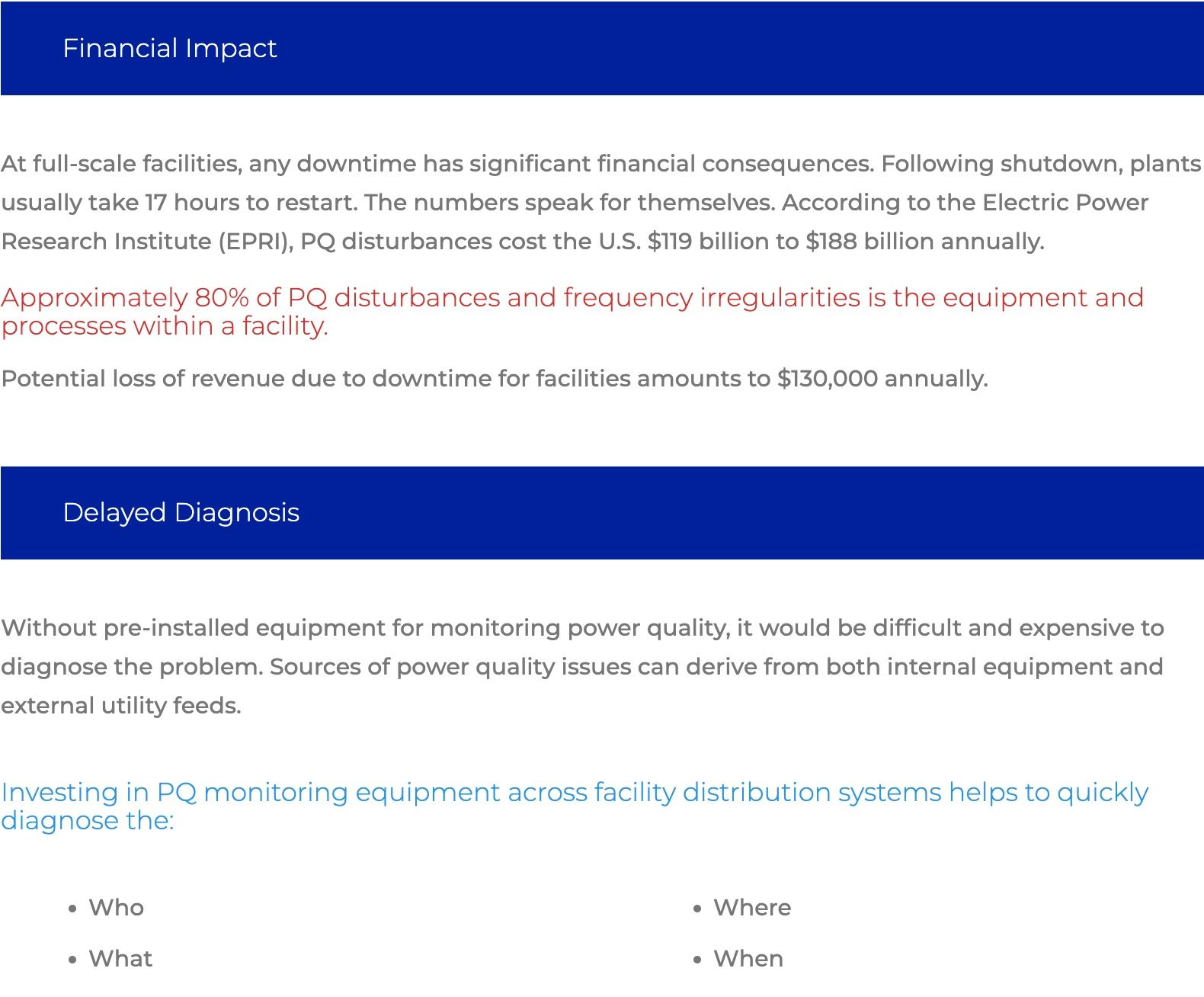The Power Quality Payback | How Measuring Energy Drives Profitability
The Power Quality Payback | How Measuring Energy Drives Profitability
The Power Quality Payback | How Measuring Energy Drives Profitability
Peter Drucker, Management Guru said, “If you can’t measure it, you can’t manage it.” Power quality is no exception. Poor power quality is unsafe and economically unsustainable for utilities and consumers alike. A facility’s power quality impacts its overall performance. Unfortunately, management teams commonly neglect it until problems arise. While we understand that many of our readers are likely familiar with the term, here is a brief explanation for newcomers.
Power quality refers to the utility’s ability to deliver power efficiently to consumers and device consumption capabilities. For instance, PQ evaluations measure, analyze and enhance sinusoidal waveforms at the rated voltage and frequency. In short, measuring it involves analyzing a power supply’s voltage, frequency, and waveforms against established standards.
Good PQ means:
- Supply voltage remains within the specified range.=
- Alternating Current frequency is close to the rated value
- Voltage and current waveforms are smooth (like a perfect sine wave)
Poor PQ describes:
- Variations in steady supply voltage
- Frequency outside the rated range measured in both magnitude and duration
Check out the Schneider Electric Infographic below for a further breakdown:

High-end Equipment Demands High-quality Power
From data centers to manufacturing, schools to hospitals, small offices to sprawling campuses, electricity is the lifeblood of facility operations. As a result, electrical equipment engineers design products with specific and narrow power requirements. Any product datasheet will clearly define these requirements. Typically, this voltage listing appears as an AC/DC voltage plus or minus a small percentage.

Power Equipment Parameters
Equipment design typically considers specific operating power limits. So, it’s no surprise that exceeding these limits results in equipment damage. But, the duration may vary depending on the type and scope of the power event.
The most accurate measure of general power performance is the Information Technology Industry Council (ITIC) curve. In other words, the ITIC curve provides a method for monitoring and determining power events that exceed standard power limits.

Meanwhile, in today’s grid environment, power quality issues are on the rise. The integration of nontraditional nodes into the electric grid, such as microgrids, is a significant factor contributing to this growth. As a result, it’s more pertinent than ever to adopt a proactive approach to monitoring and correcting power quality. Moreover, a proactive approach helps to prevent costly service interruptions.

The Value of Investing Upfront
Let’s imagine a scenario…
A piece of critical equipment breaks periodically or worse, suffers damage, and needs replacement. What kind of impact might this have on your operation?

As a result, the ‘why’ is easier to define, leading to timely, decisive, and cost-effective resolutions.
Measuring to Manage
A fully-fledged power monitoring system enables the collection of PQ data logging and trending over time. By identifying power issues and making intelligent decisions about costly equipment, a power monitoring system quickly pays for itself. Additionally, the capability to log and trend data assists in determining appropriate maintenance schedules for critical equipment, thereby increasing operational efficiency and reducing costs.
Finally, power quality monitoring systems offer additional operational benefits, such as the ability to observe electrical distribution system information at a glance. You’ll be able to see feeder breaker statuses, backup generation details, building loads, tenant billing and more.
APT 4 Power Quality Solutions
Power quality plays a significant role in reducing costs and preserving energy. The interruption of critical loads often costs more than all the energy savings accumulated this year. Don’t let your efficiency and productivity suffer.
APT specializes in fully-fledged power monitoring system design, implementation, and service. In the absence of a power monitoring system, we diagnose power quality issues, recommend corrections, and design systems for future detection and correction. By identifying and implementing changes, we conserve energy, reduce impact, and protect your critical loads, saving you time and money. Above all, APT assists our customers in better understanding the impact of PQ events on their business.
Are you experiencing power quality issues or looking for a proactive solution?
Contact an APT professional today. Let us help you find the right solution to fit your organization’s needs.
Ken Shaffer, APT Engineering Operations Manager

Contact









